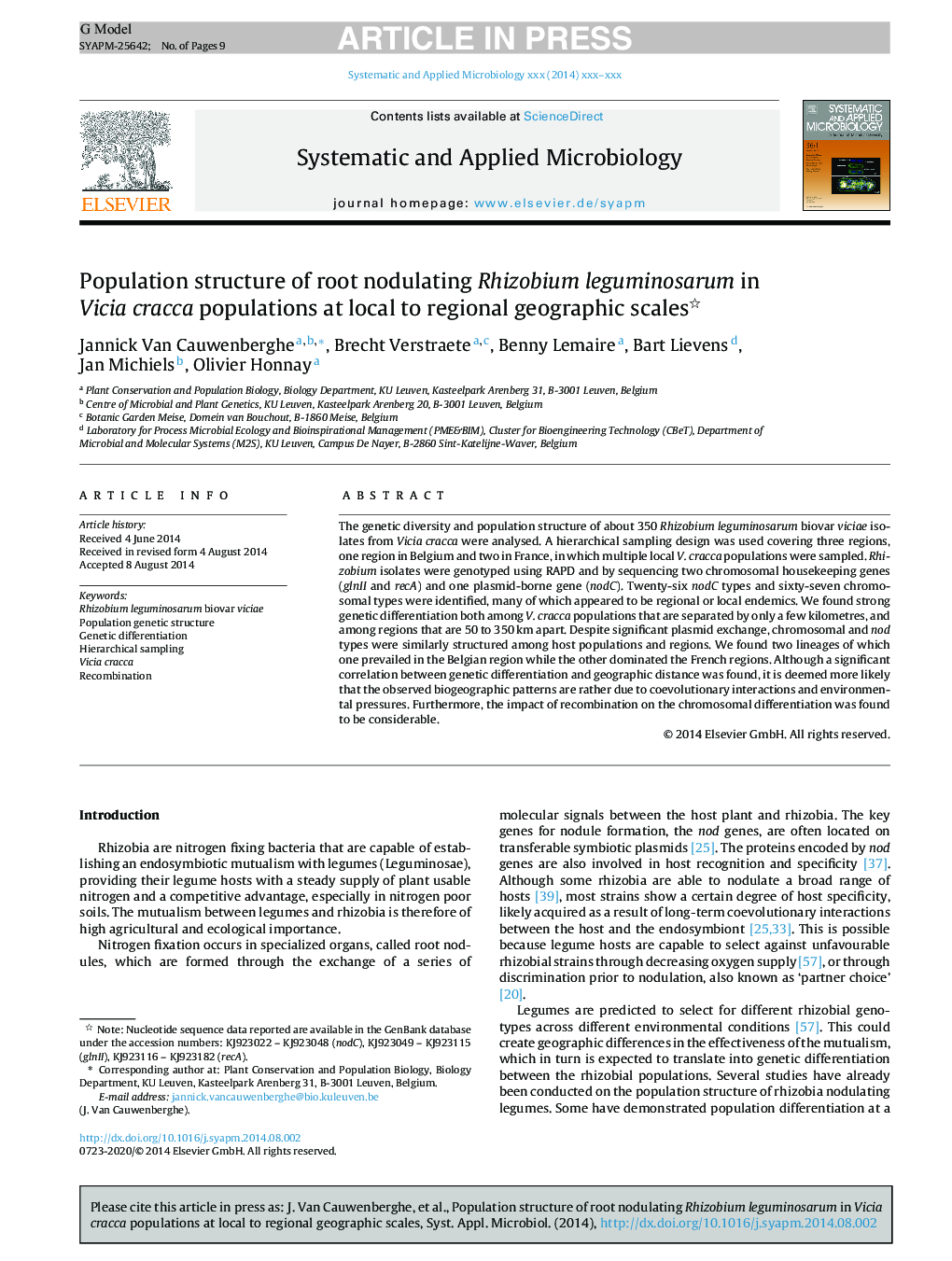| Article ID | Journal | Published Year | Pages | File Type |
|---|---|---|---|---|
| 10879392 | Systematic and Applied Microbiology | 2014 | 9 Pages |
Abstract
The genetic diversity and population structure of about 350 Rhizobium leguminosarum biovar viciae isolates from Vicia cracca were analysed. A hierarchical sampling design was used covering three regions, one region in Belgium and two in France, in which multiple local V. cracca populations were sampled. Rhizobium isolates were genotyped using RAPD and by sequencing two chromosomal housekeeping genes (glnII and recA) and one plasmid-borne gene (nodC). Twenty-six nodC types and sixty-seven chromosomal types were identified, many of which appeared to be regional or local endemics. We found strong genetic differentiation both among V. cracca populations that are separated by only a few kilometres, and among regions that are 50 to 350Â km apart. Despite significant plasmid exchange, chromosomal and nod types were similarly structured among host populations and regions. We found two lineages of which one prevailed in the Belgian region while the other dominated the French regions. Although a significant correlation between genetic differentiation and geographic distance was found, it is deemed more likely that the observed biogeographic patterns are rather due to coevolutionary interactions and environmental pressures. Furthermore, the impact of recombination on the chromosomal differentiation was found to be considerable.
Keywords
Related Topics
Life Sciences
Agricultural and Biological Sciences
Ecology, Evolution, Behavior and Systematics
Authors
Jannick Van Cauwenberghe, Brecht Verstraete, Benny Lemaire, Bart Lievens, Jan Michiels, Olivier Honnay,
